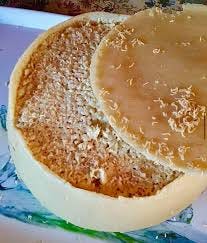A newsletter recommending good examples of storytelling across:
3 Trivia
2 Fun Facts, and
1 Photograph.
Let's dive in…
Trivia’s:
1. Ethymology:
The origin of this word can be traced back to 17th century. The most widely accepted hypothesis is that it is related to "___bullion", which was a slang word for "uproar" or "tumult"; a noisy uncontrollable exuberance. It is often connected to the British slang adjective, meaning "high quality", and indeed the collocation "___ booze" is attested. Other theories consider it to be short for iterum, Latin for "again; a second time".
That it comes from the large drinking glasses used by Dutch seamen.
In current usage, the name used is often based on its place of origin.
What word? (Blanks indicative)
2. General:
In the 2024 Olympic Games in Paris, swimmers had to deal with a famously polluted Seine river known for its high levels of bacteria and waste. To protect themselves from potential infections caused by the contaminated water, they adopted a peculiar pre-competition ritual. The believing its acidity might help cleanse their digestive systems.
What ritual am I talking about?
3. Environment:
Tulsi Gowda is celebrated for her exceptional knowledge of the forest and its plant life. Environmentalists refer to her as the ______ _ ____ (12, 2, 6) and her tribe calls her the "tree goddess" due to her remarkable expertise in identifying mother trees and collecting seeds. Her deep understanding of forest ecology includes the crucial role mother trees play in connecting various plant species and nurturing saplings.
What is the title given to Tulsi Gowda that reflects her profound knowledge of forest?
Fun Facts:
Casu Marzu:
Ever heard of a cheese that's so "alive" it moves? In Sardinia, there's a traditional delicacy called casu marzu, which translates to "rotten cheese." But what makes this cheese truly unique is its secret ingredient—fly larvae! To create its signature soft texture and a liquid known as "teardrop," cheese makers intentionally allow flies to lay their eggs in the cheese. The larvae break down the fats, creating a rich, creamy texture that's unlike any other. Despite being banned in the European Union for safety reasons, casu marzu remains a beloved (and daring!) treat for those brave enough to try it.
Did you know that before taking the music world by storm, Doja Cat, whose real name is Amala Ratna, was trained in the classical Indian dance form Bharatanatyam? She learned it while living in an ashram led by Swamini Turiyasangitananda, an American Jazz musician. From mastering Bhajans and Bharatanatyam in the ashram to perfecting break dance in New York, Doja Cat’s journey has been anything but ordinary. With numerous accolades, including a Grammy, she’s now a global music sensation. Who would’ve thought that the queen of "Say So" started with Bharatanatyam?
What's your favorite Doja Cat song? Comment below!
Photograph of the Day:
The Tiger Capital of India:
Today, I bring you a photograph from my very own hometown, Nagpur—yes, the Orange City! But beyond its famous oranges, there's a fascinating tale about why it's also called the 'Tiger Capital of India.'
Reputed as one of India's top Smart Cities, Nagpur is a city with many identities—'The Orange City,' 'The Winter Capital of Maharashtra,' and 'The Tiger Capital of India.' Let's dive into the fascinating stories behind these titles.
Historically, Nagpur served as the capital of the Central & Berar Province for nearly a century. However, the State Reorganization Act of 1956 led to the incorporation of Nagpur and the Vidarbha region into the newly formed state of Maharashtra. Although Nagpur lost its status as the capital of Maharashtra, a political agreement known as the Nagpur Pact was established. This pact designated Nagpur as the second capital of Maharashtra, ensuring that the state's legislature and legislative council hold their winter sessions in the city. This is why Nagpur proudly holds the title of 'Winter Capital.'
Nagpur’s connection to India's wildlife is equally impressive. The city is a hub for numerous tiger reserves, including the Tadoba-Andhari Tiger Reserve, Pench National Park, Nagzira-Navegaon Tiger Reserve, Melghat Tiger Reserve, Bor Tiger Reserve, and Umred Karhandla Wildlife Sanctuary. Given that Maharashtra ranks third in India for its tiger population, it's no surprise that Nagpur has earned the title 'Tiger Capital of India.' The surrounding forests, covering a vast 37,251 square kilometers, are teeming with diverse flora and fauna, drawing both domestic and international tourists to its renowned tiger reserves.
With its rich history and vibrant natural landscape, Nagpur rightfully claims its place as both the 'Winter Capital' and the 'Tiger Capital' of India.
In case if you have missed my previous newsletters here are the links to them…
give it a click
Could you help me get there by sharing my newsletter with a friend? Your support means a lot to me.
Here’s the link to the publication: https://bhumi64.substack.com
Thank you so much!
Answers:
You can know more about the topics (underlined words) by clicking on them.







